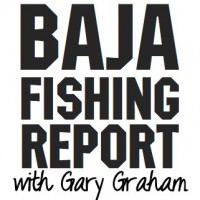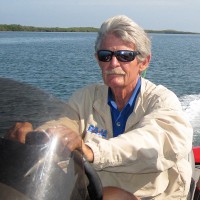
While I don’t imagine that many are going to mourn the passing of 2020, all in all, it was a surprisingly good year for sportfishing for many in Baja. At least for those who managed to make it down. There was far less pressure on the fishery which demonstrated how quickly the food chain could snap back – from the sardina to the huge yellowfin tuna.
The bright spots during the winter are usually the appearance of squid at the Coronado Islands along with some yellowtail and seabass. The squid are already moving in, and the game fish should be finding them soon.
Weather is a factor that anglers will want to pay close attention to. This is the time of year when the ocean in this zone can become ugly extremely fast.

Depending on the weather, the local fleet at Ensenada will be operating, but it would be worthwhile to double-check before going out on a trip. Surface action for chunky bonito has been terrific recently. Not only is it great smoked at home, but there is also plenty of bottom fish to round out the limits being caught.

The San Quintín weather has been chilly recently forcing anglers to bundle up to stay warm; however, it’s worth the effort since quality yellowtail and lunker-sized lingcod, along with other rockfish, are filling the fish box.

Bahía Asunción locals and visitors alike are relishing what locals are calling the trophy-sized yellowtail in the 30- to 40-pound class bite, plus some nice-sized calico bass to add to the catch list.
When cold, green water currents arrived at Magdalena Bay, most of the larger sport fishers, some traveling all the way from Costa Rica to participate in the annual striped marlin show, declared the season over and hightailed it south! Meanwhile, the cold currents diminished after a week or two and the striper bite resumed along with the wahoo much to the delight of the small fleet remaining in the area.

Inside Santa Maria Bay, the roosterfish put on a show to be remembered by both the fly and conventional anglers as they made their plans for next season.
On the Sea of Cortez side. the season of the north winds has begun and Bahía de Los Ángeles down to Loreto has been quiet.

At Loreto, the fishing action off the arroyo close to town and south along the coast to Danzante consisted of small roosterfish, sierra, cabrilla, and oversized firecracker yellowtail that were eager to bite.
If the fishing day corresponds to a less than 8-mph north wind, Pulpito and Idelfonso would be a great gamble for big yellowtail!
Or Puerta Almejas that has been kicking out quick limits for the boats making the long trek north. There, large mackerel six to eight inches are the ticket and at least at Almejas, the big macs are getting skunked.
La Paz has been attracting folks hoping to find some sunshine when they arrive from colder places in the world. And indeed, the sun has been out mostly, although relatively speaking, it has been on the chilly side.
As is typical this time of year, the winds blow, with some gusts to 25 knots. For fishing, there are not that many anglers around anyway, but for those who went out, it was either rough, making it hard to get to fishing grounds and get bait or, they were getting blown off the water by the late morning and early afternoon.

On the good days, there are mostly smaller dorado around with an occasional larger one. Inshore, cabrilla, and snapper, as well as jack crevalle, provided action when there was nothing farther out.
East Cape locals and the few visiting anglers are finding similar conditions as earlier in the fall when dorado, wahoo, and even yellowfin were in the catch reports of hotel boats venturing out on non-windy days. For the tin boat fleet, it has been sierra, jack crevalle, and maybe a pargo or red snapper on good days before the north wind line reaches shore.

Most boats out of Puerto Los Cabos, have been concentrating on the fishing grounds off Chileno, Palmilla, Gordo Banks, Punta Gorda, Cardona, La Fortuna, and Iman. The area also had some north winds, in the normal cycles, a few days of gusty conditions, then two or three calm days before the pattern repeated itself. Even on the days it has been windy, it was often calm until later in the morning and anglers were able to find good action closer to shore in the more protected areas.
Anglers are using sardina and ballyhoo for bait, with limited numbers of caballito.
Dorado were found in mixed sizes and although the yellowfin tuna were spotty, they are being seen and are in the area, they just haven’t been willing to bite consistently. There were a handful of nicer 60- to 90-pound yellowfin brought in, as well as some medium-sized, 20- to 40-pound fish caught.
More striped marlin arrived on local grounds, as this is the time that these billfish shift in the direction of the Sea of Cortez; there were also a couple of sailfish recently.
Wahoo were abundant on the inshore grounds, particularly Punta Gorda, Cardon, La Fortuna, and the Inner Gordo Banks.

At Cabo San Lucas, striped marlin are starting to slide down from the Magdalena area and they are thick inside the Potato Bank on the Pacific side. Double-digit releases are not uncommon. The bank is covered with sardina and mackerel in all sizes, attracting dorado, wahoo, and yellowfin tuna.

Closer to Lands’ End, inshore jack crevalle, roosterfish, and sierra were the prime catch north to the Cabo Falso Lighthouse.
Gary Graham -That Baja Guy
With more than five decades of fishing experience – from light tackle and fly to offshore billfish – Gary Graham has experienced all aspects of fishing in the Southern California and Baja waters. His observations of species behavior, tackle and techniques are always from his unique perspective, earning him the respect of his peers as well as anglers who eagerly follow his Baja reports and features.
Gary maintained a home at East Cape in Baja Sur for more than 18 years and still spends nearly half of each year exploring the entire peninsula in his self-contained Roadtrek van. He observes everything Baja, from the mysteries of a tide pool on a deserted Baja beach filled with tiny sea creatures to the largest billfish in the sea.

